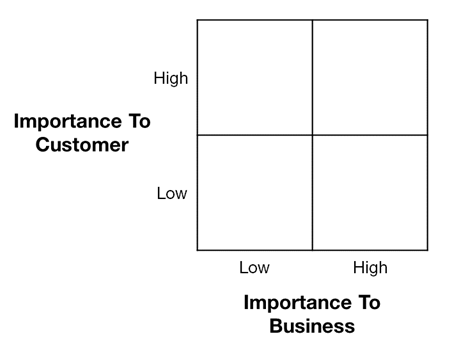Why CX Prioritization Matters And How To Get Started
Prioritization is the art and science of making decisions, an active process of choosing one thing over another. Just like we all need some form of prioritization in our day-to-day activities, whether we’re thinking about how to tackle our current day’s workload or household chores, companies need prioritization processes and approaches that ensure decisions are made consciously, based on fact, and grounded in what matters most. Without a structured, consistent approach to prioritization, firms can make bad bets on where to apply budget and staff, under-deliver for customers, and waste critical time relying on luck when skill would be far more effective. When done properly, prioritization of customer experience (CX) improvement projects should be:
- A conscious action. CX leaders often have long lists of potential improvements and opportunities, and they can struggle with deciding what to do first. Without a consistent structure or approach across the enterprise, it’s the same as not prioritizing at all — groups can go off and make decisions on their own, but the initiatives and activities they’ve chosen for the top of their lists may conflict with those chosen by other parts of the organization. Prioritization should not happen to a business; it must be an active set of choices the business makes.
- Based on fact. Research and data are critical underpinnings for any prioritization effort. What do you know about your customers’ wants and needs? What surveys or other quantitative research exist to show you how many customers experience problems related to the things you’re prioritizing? What qualitative research, such as ethnography or user testing, illustrate the issues beyond the numbers? What operational, product-level, and financial data demonstrate the importance to the business and the customer? When you’re making decisions that can impact thousands of people (or more), cost hundreds of thousands of dollars (or more), and require your colleagues (and partners) to take specific actions, do you really want to make that decision based solely on someone’s gut instinct? Executives like to know they’re making sure bets, and having data on your side helps build a business case for why to do (or not do) specific activities.
- Grounded in what matters most. Prioritization processes can have as few as one dimension, or they can have many; the trick is finding enough dimensions to feel confident you’re making a decision based on what matters to the people for whom you’re deciding. At the most basic level, I recommend a two-by-two matrix (see the sample “four-box” below), where at least one of the dimensions is focused on the customer. Many businesses prioritizing at this level have one dimension for the customer and one for the business, looking at specific levels of importance or impact. Customer “importance” can relate to key drivers of experience, number of customers impacted by an issue or change, or how the change would affect their overall ease of using the products or services they bought. Business “importance” is often fairly similar — focusing on areas like alignment to corporate strategy, number of transactions/calls/emails, or impact on revenue, cost, or risk.

Where do you go from here? I’m in the middle of refreshing our prioritization research, so stay tuned for updated research and resources coming later this fall. If you need help more urgently, contact your account manager for help setting up an inquiry (or click here to request one on your own), and we can talk about a prioritization model that will work for you!
